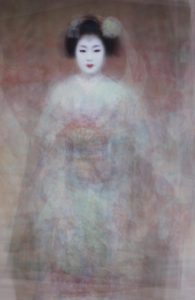
2009 年5月3日
中国 北京市 望京
ゼラチン・シルバー・プリント
31 migrant laborers watching a film at an outdoor cinema by a shopping center
May 3, 2009
Wangjing, Beijing, China
Gelatin silver print

2009年4月18日
台湾 台北市 コミックマーケットの路上
ゼラチン・シルバー・プリント
34 girls cosplaying as Japanese anime characters
April 18, 2009
Outdoor comic book market, Taipei City, Taiwan
Gelatin silver print

2000年~2002年
東京都 原宿
ゼラチン・シルバー・プリント
43 girls in Harajuku, the fashion district for the youth
2000 – 2002
Harajuku, Tokyo
Gelatin silver print

2012年7月13日、16日
東京都 代々木公園「さようなら原発集会」首相官邸前
ゼラチン・シルバー・プリント
25 demonstrators protesting nuclear energy use after the Fukushima Daiichi Nuclear Power Station meltdowns in 2011
July 13 and 16, 2012
The Yoyogi Park “Goodbye Nuclear Energy Association” in front of the Prime Minister’s Official Residence, Tokyo
Gelatin silver print

2003年3月8日
東京都 日比谷公園~銀座の路上
ゼラチン・シルバー・プリント
30 marchers at “World Peace Now”, the demonstration of 50,000 people protesting the US-UK attacks against Iraq
March 8, 2003
From Hibiya Park to streets of Ginza, Tokyo
Gelatin silver print

2010年2月5日、6日
インドネシア バンダ・アチェ
ゼラチン・シルバー・プリント
35 victims of the tsunami from earthquakes of the Sumatran coast in 2004
February 5 and 6, 2010
Banda Aceh, Indonesia
Gelatin silver print
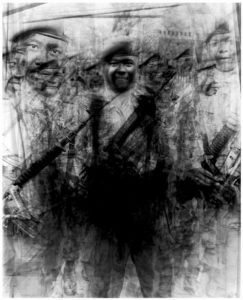
2010 年10 月5 日
インドネシア バンダ・アチェ
ゼラチン・シルバー・プリント
19 Indonesian air force soldiers
October 5, 2010
Banda Aceh, Indonesia
Gelatin silver print

2010 年10月5日
インドネシア バンダ・アチェ
ゼラチン・シルバー・プリント
17 Indonesian navy soldiers
October 5, 2010
Banda Aceh, Indonesia
Gelatin silver print

2010年10月5日
インドネシア、バンダアチェ
ゼラチン・シルバー・プリント
24 Indonesian army soldiers
October 5, 2010
Banda Aceh, Indonesia
Gelatin silver print

2011年9月8 日
イラン ケルマンシャー
ゼラチン・シルバー・プリント
23 soldiers of the Iranian Army
September 8, 2011
Kermanshah, Iran
Gelatin silver print

2009年5月2日
中国 北京市 天安門広場
ゼラチン・シルバー・プリント
24 army soldiers standing guard over Tian’anmen Square
May 2, 2009
Tian’anmen Square, Beijing, China
Gelatin silver print

2004年8月6日
広島市 元安川岸
ゼラチン・シルバー・プリント
39 people offering paper lanterns upon the Motoyasu River on Peace Memorial Day in remembrance of atomic bomb victims
August 6, 2004
the banks of Motoyasu River, Hiroshima City, Hiroshima, Japan
Gelatin silver print

2008年7月27日
バングラデシュ バガチャラ市 ナイラ村
ゼラチン・シルバー・プリント
23 Muslim women wearing the burka
July 27, 2008
Nira Village, Bagachara City, Bangladesh
Gelatin silver print

2009年9月20日
インドネシア マルク州 アンボン市
ゼラチン・シルバー・プリント
38 Muslim women attending prayers after observing Ramadan
September 20, 2009
Ambon City, Maluku Province, Indonesia
Gelatin silver print

2008年7月25日
バングラデシュ、ダカ、ハイコッツマジャールモスク/バイトゥルムカラムモスク
ゼラチン・シルバー・プリント
34 Muslims to the mosque in Dhaka
July 25, 2008
Highcourt Majar Mosque / Baitul Mukarram Mosque, Dhaka, Bangladesh
Gelatin silver print

2011年9月6日、7日
イラン クルディスタン州 マリバーン及びウラマーンタフトの村々
ゼラチン・シルバー・プリント
30 Kurdish men
September 6 and 7, 2011
Villages of Marivan and Ur-Rahman Takht, Kurdistan Province, Iran
Gelatin silver print

2010年11月26日
ウズベキスタン タシュケント
ゼラチン・シルバー・プリント
22 people visiting the mosque for prayer
November 26, 2010
mosque in Tashkent, Uzbekistan
Gelatin silver print

2008年7月12日、13日
インド タミル・ナードゥ州 カニャークマリ
ゼラチン・シルバー・プリント
23 Hindu pilgrims witnessing the sunrise from the sacred site of Cape Comorin, at the southernmost tip of India
July 12 and 13, 2008
Kanniyakumari, Tamil Nadu, India
Gelatin silver print

2003年2月6日
和歌山県 新宮市 神倉神社
ゼラチン・シルバー・プリント
30 participants (agariko) in the Otou Festival of Kannokura Shrine
February 6, 2003
Kannokura Shrine, Shingu City, Wakayama, Japan
Gelatin silver print

2009年5月7日
韓国 ソウル市 民俗村
ゼラチン・シルバー・プリント
25 Pungmul performers
May 7, 2009
Folk Arts and Culture Town, Seoul, Korea
Gelatin silver print
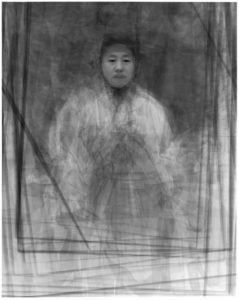
2009年5月8日
韓国 江原
ゼラチン・シルバー・プリント
29 people celebrating the traditional Double Fifth Festival
May 8, 2009
Gangwon, Korea
Gelatin silver print

2003年7月23日
福島県 会津田島町
ゼラチン・シルバー・プリント
30 participants in the Bridal procession at the Nanahokai-shinji (Seven Dish Offering to God) in the Aizu Tajima Gion Festival
July 23, 2003
Aizu Tajima, Fukushima, Japan
Gelatin silver print

2002年9月14日
大阪府 岸和田市 並松町
ゼラチン・シルバー・プリント
60 participants in the Kishiwada Danjiri Festival of Namimatsu Town
September 14, 2002
Namimatsu, Kishiwada City, Osaka, Japan
Gelatin silver print

2002年8月23日
沖縄県 勝連町 平敷屋
ゼラチン・シルバー・プリント
60 Eisa dancers of the Heshikiya Youth Group
August 23, 2002
Heshikiya, Katsuren-cho, Okinawa, Japan
Gelatin silver print

2002年7月14日
和歌山県 那智勝浦町 熊野那智大社
ゼラチン・シルバー・プリント
33 bearers of the divine palanquin at the annual festival of Nachi Grand Shrine
July 14, 2002
Kumano Nachi Grand Shrine, Nachi Katsu-ura
Town, Wakayama, Japan
Gelatin silver print

2002年8月31日、9月1日
山形県 出羽三山神社
ゼラチン・シルバー・プリント
60 monks (Yamabushi) at the Hassakusai Festival of Dewa Sanzan Shrine
August 31 and September 1, 2002
Dewa Sanzan Shrine, Yamagata, Japan
Gelatin silver print

2002年7月14日
和歌山県 高野町 専修学院
ゼラチン・シルバー・プリント
35 monks-in-training from the Shingon Sect studying at the Kohya Mountain Academy
July 14, 2002
Kohya Town, Wakayama, Japan
Gelatin silver print

2008年7月20日
インド ブッタガヤ
ゼラチン・シルバー・プリント
29 monks
July 20, 2008
Bodh Gaya, India
Gelatin silver print

2009年9月30日
インドネシア バリ島
ゼラチン・シルバー・プリント
29 men celebrating the Mekiyis Festival in Bali
September 30, 2009
Bali, Indonesia
Gelatin silver print

2009年10月
インドネシア バリ島 ウブド村
ゼラチン・シルバー・プリント
18 Kecak dancers
October, 2009
Ubud, Bali, Indonesia
Gelatin silver print

2009年9月20日
インドネシア マルク州 アンボン市
ゼラチン・シルバー・プリント
30 Muslim men attending prayers after observing Ramadan
September 20, 2009
Ambon, Maluku, Indonesia
Gelatin silver print

2009年9月20日
インドネシア マルク州 アンボン市 アマフス村の教会
ゼラチン・シルバー・プリント
27 Christian men attending Sunday Mass
September 20, 2009
Amahusu Village Church, Ambon, Maluku, Indonesia
Gelatin silver print

2009年9月20日
インドネシア マルク州 アンボン市 アマフス村の教会
ゼラチン・シルバー・プリント
27 Christian women attending Sunday Mass
September 20, 2009
Amahusu Village Church, Ambon, Maluku, Indonesia
Gelatin silver print

2009年9月19日
インドネシア マルク州 アンボン市
ゼラチン・シルバー・プリント
18 VIP participants (state governor, chief of police, etc.) in the ceremony following Ramadan
September 19, 2009
Ambon, Maluku, Indonesia
Gelatin silver print

2008年7月19日
インド バラナシ ガンジス川
ゼラチン・シルバー・プリント
17 Hindu women bathing in the sacred waters of the Ganges in the early morning
July 19, 2008
Ganges River, Varanasi, India
Gelatin silver print
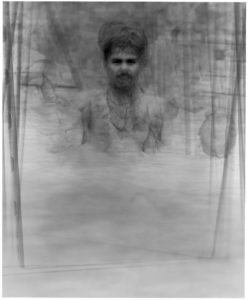
2008年7月19日
インド バラナシ ガンジス川
ゼラチン・シルバー・プリント
20 Hindu men bathing in the sacred waters of the Ganges in the early morning
July 19, 2008
Ganges River, Varanasi, India
Gelatin silver print

2008年7月12日、13日
インド タミル・ナードゥ州 カニャークマリ
ゼラチン・シルバー・プリント
33 Hindu pilgrims bathing at the sacred site of Cape Comorin of the southernmost tip of India
July 12 and 13, 2008
Kanyakumari, Tamil Nadu, India
Gelatin silver print

2002年8月5日、6日
青森県 青森市の路上
ゼラチン・シルバー・プリント
40 Haneto dancers at the Nebuta Festival
August 5 and 6, 2002
streets of Aomori City, Aomori, Japan
Gelatin silver print

2002年7月20日
神奈川県 平塚市 須賀地区
ゼラチン・シルバー・プリント
45 bearers of the divine palanquin at the Mishima Festival in Hiratsuka City
July 20, 2002
Suka Region, Hiratsuka, Kanagawa, Japan
Gelatin silver print

2004年4月4日、10日、5月3日
長野県 諏訪市
ゼラチン・シルバー・プリント
30 log bearers for the Onbashira Festival at the Suwa Grand Shrine
April 4, 10 and May 3, 2004
Suwa, Nagano, Japan
Gelatin silver print

2001年-2002年
千葉県 亀田総合病院/東京都 昭和大学病院
ゼラチン・シルバー・プリント
30 doctors and dentists
2001–2002
Kameda Medical Center, Chiba/ Showa University Hospital, Tokyo
Gelatin silver print

2002年1月-2月
東京都 千代田区弁護士会館 他
ゼラチン・シルバー・プリント
40 lawyers in Tokyo
January – February, 2002
Chiyoda-ku Bar Association Building and other locations, Tokyo
Gelatin silver print

2008年7月25日
バングラデシュ ダカ スクエア病院の診察室
ゼラチン・シルバー・プリント
19 doctors, nurses and radiologists at Square Hospital in Dhaka
July 25, 2008
consultation rooms of Square Hospitals, Ltd., Dhaka, Bangladesh
Gelatin silver print

2009年5月4日
中国 北京市 望京 イトーヨーカドーの美容室
ゼラチン・シルバー・プリント
16 hair stylists in the shopping mall
May 4, 2009
Ito Yokado Shopping Center, Wangjing, Beijing, China
Gelatin silver print

2002年6月10日
東京都 株式会社扶桑社『週刊SPA!』編集部
ゼラチン・シルバー・プリント
30 editors of weekly magazine SPA!
June 10, 2002
Editorial Department of SPA! Weekly, Fusosha Publishing Incorporated, Tokyo
Gelatin silver print

2002年3月21日、25日
東京都 ジャーナルスタンダード渋谷店/新宿店
ゼラチン・シルバー・プリント
30 sales assistants at JOURNAL STANDARD retail stores
March 21 and 25, 2002
JOURNAL STANDARD Shibuya and Shinjuku, Tokyo
Gelatin silver print

2002年2月-6月
東京都 港区 六本木 他
ゼラチン・シルバー・プリント
29 hostesses of Kyaba-kuras, at casual night clubs
February – June, 2002
Roppongi, Minato-ku and other locations, Tokyo
Gelatin silver print

2011年9月12、13日
イラン バンダレアッバースのショッピングモール
ゼラチン・シルバー・プリント
32 sales assistants at the retail store
September 12 and 13, 2011
shopping mall in Bandar Abbas, Iran
Gelatin silver print

2003年5月11日
茨城県 真壁町
ゼラチン・シルバー・プリント
42 plasterers taking workshop courses at Makabe Traditional Storehouse School
May 11, 2003
Makabe, Ibaraki, Japan
Gelatin silver print

2001年10月1日
千葉県 鴨川漁港
ゼラチン・シルバー・プリント
78 fishermen of the Kamogawa Fishermen’s Union
October 1, 2001
Kamogawa Fishing Port, Chiba, Japan
Gelatin silver print

2008年7月15日
インド ケーララ州 コチの漁港
ゼラチン・シルバー・プリント
34 fishermen in Cochin
July 15, 2008
Cochin fishing harbor, Kerala, India
Gelatin silver print

2009年5月4日
中国 北京市 望京の建設現場、飯場
ゼラチン・シルバー・プリント
36 migrant laborers constructing a high-rise apartment building
May 4, 2009
Workers’ area near construction site, Wangjing, Beijing, China
Gelatin silver print

2009年9月23日
インドネシア マルク州 アンボン市 アマフス村
TIRTA KENCANA HOTEL
ゼラチン・シルバー・プリント
23 hotel staff
September 23, 2009
TIRTA KENCANA HOTEL, Amahusu, Ambon, Maluku, Indonesia
Gelatin silver print

2004年6月8日
北海道 礼文島 香深漁港
ゼラチン・シルバー・プリント
30 fishermen
June 8, 2004
Kafuka Fishing Port, Rebun Island, Hokkaido, Japan
Gelatin silver print

2008年7月25日
バングラデシュ ダカ ショトルガット港
ゼラチン・シルバー・プリント
20 ferryboat conductors working on the Buriganga River
July 25, 2008
Sadarghat, Dhaka, Bangladesh
Gelatin silver print

2008年7月25日
バングラデシュ、ダカ、ショトルガット港で
ゼラチン・シルバー・プリント
40 hatchmen working at harbor
July 25, 2008
Sadarghat, Dhaka, Bangladesh
Gelatin silver print

2002年4月22日
東京都 株式会社セルート本社
ゼラチン・シルバー・プリント
30 motorcycle messengers of SAROUTE Co., Ltd.
April 22, 2002
SAROUTE Co., Ltd. Headquarters, Tokyo
Gelatin silver print

1999年-2002年
東京都 各地
ゼラチン・シルバー・プリント
40 salaried employees of various companies in Tokyo
1999–2002
Various locations, Tokyo
Gelatin silver print

2003年4月21日
宮崎県 スカイネットアジア航空本社 宮崎空港
ゼラチン・シルバー・プリント
25 cabin attendants of Skynet Asia Airways Co., Ltd.
April 21, 2003
Skynet Asia Airways Headquarters, Miyazaki Airport, Miyazaki, Japan
Gelatin silver print

2003年5月12日
新潟県 新潟市陸上競技場 サッカーJ リーグ試合会場
ゼラチン・シルバー・プリント
17 cheerleaders of ALBIREX NIIGATA Cheerleaders Team
May 12, 2003
J-League Soccer Event, Niigata City Track and Field Stadium, Niigata, Japan
Gelatin silver print
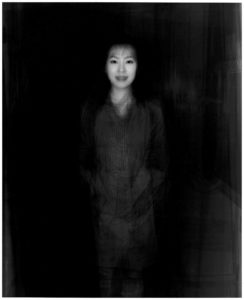
2002年4月
大阪府 大阪市 北区 曽根崎新地
ゼラチン・シルバー・プリント
29 club hostesses in Shinchi
April, 2002
Sonezaki-Shinchi, Kita-ku, Osaka, Japan
Gelatin silver print

2009年5月3日、5日
中国 北京市 望京 按摩治療院
ゼラチン・シルバー・プリント
23 traditional massage therapists
May 3 and 5, 2009
Traditional Massage Clinic in Wangjing, Beijing, China
Gelatin silver print

2009年9月24日
インドネシア マルク州 アンボンの州庁舎
ゼラチン・シルバー・プリント
32 public officials of Maluku Province
September 24, 2009
Ambon Statehouse, Maluku, Indonesia
Gelatin silver print

2002年6月30日
群馬県 大泉町 ブラジリアンプラザ
ゼラチン・シルバー・プリント
30 Brazilian residents of Oizumi, Gunma Prefecture, known as the “Brazil within Japan”
June 30, 2002
The Brazilian Plaza, Oizumi, Gunma, Japan
Gelatin silver print

2008年11月17日–20日
トルコ イスタンブール
ゼラチン・シルバー・プリント
36 merchants at the Grand Bazaar of Istanbul
November 17–20, 2008
Istanbul, Turkey
Gelatin silver print

2008年11月18日
トルコ イスタンブールの軍事博物館
ゼラチン・シルバー・プリント
26 members of the military band of the Turkish Land Forces
November 18, 2008
Military Museum, Istanbul, Turkey
Gelatin silver print

2010年9月12日
中国 蘭州駅ホーム
ゼラチン・シルバー・プリント
14 attendants on train 2636 to Hohhot, Lanzhou
September 12, 2010
Lanzhou Station platform, China
Gelatin silver print

2009年9月19日
インドネシア マルク州 アンボン市
ゼラチン・シルバー・プリント
27 tailors
September 19, 2009
Ambon, Maluku, Indonesia
Gelatin silver print

2008年7月25日
バングラデシュ ダカ ショトルガット港
ゼラチン・シルバー・プリント
26 merchants at the Sadarghat harbor marketplace
July 25, 2008
Sadarghat, Dhaka, Bangladesh
Gelatin silver print

1999年-2003年
東京都 各地
ゼラチン・シルバー・プリント
40 media and press freelancers
1999–2003
Various locations, Tokyo Gelatin silver print
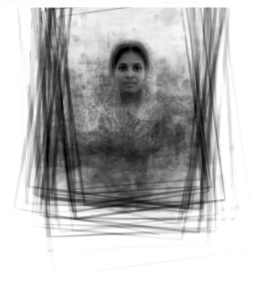
2008年7月26日
バングラデシュ ダカ
ゼラチン・シルバー・プリント
35 women working with sewing machines at Orchid Styles Ltd., a textile company
July 26, 2008
Dhaka, Bangladesh
Gelatin silver print

2002年6月、8月
沖縄県 那覇市、金武町 他
ゼラチン・シルバー・プリント
43 women working at marketplaces in Naha and other locations
June and August, 2002
Naha, Kin and other locations, Okinawa, Japan
Gelatin silver print

2008年7月27日
バングラデシュ ジェッソール州 ナイラ村の畑
ゼラチン・シルバー・プリント
32 farming men
July 27, 2008
fields in Nayra, Jessor, Bangladesh
Gelatin silver print

2001年11月23日、24日
千葉県 鴨川市 みんなみの里
ゼラチン・シルバー・プリント
30 farmers of Kamogawa City Minnami no Sato
November 23 and 24, 2001
Minnami no Sato, Kamogawa, Chiba, Japan
Gelatin silver print

2010年10月5日
インドネシア パプア州 ジャヤプラ センタニの市場
ゼラチン・シルバー・プリント
27 women at marketplaces in Sentani
October 5, 2010
Sentani, Jayapura, Papua, Indonesia
Gelatin silver print

2009年9月27日
インドネシア パプア州 ワメナの市場
ゼラチン・シルバー・プリント
27 women at marketplaces in Wamena
September 27, 2009
Wamena, Papua, Indonesia
Gelatin silver print

2008年7月27日
バングラデシュ ジェッソール州 ナイラ村の畑
ゼラチン・シルバー・プリント
35 women from a farming village
July 27, 2008
fields in Nayra, Jessor, Bangladesh
Gelatin silver print

2010年11月22日
ウズベキスタン サマルカンド郊外の畑
ゼラチン・シルバー・プリント
25 farming women from the outskirts of Samarkand
November 22, 2010
fields surrounding Samarkand, Uzbekistan
Gelatin silver print

2010年11月22日
ウズベキスタン サマルカンド郊外の畑
ゼラチン・シルバー・プリント
19 farming men from the outskirts of Samarkand
November 22, 2010
fields surrounding Samarkand, Uzbekistan
Gelatin silver print

2010年9月7日
中国 新疆ウイグル自治区 カシュガル郊外
ゼラチン・シルバー・プリント
25 Uyghur camel merchants
September 7, 2010
Greater Kashgar Area, Xinjiang Uyghur Autonomous Region, China
Gelatin silver print

2010年9月7日
中国 新疆ウイグル自治区 カシュガル郊外
ゼラチン・シルバー・プリント
26 women at bazaars from the outskirts of Kashgar
September 7, 2010
Greater Kashgar Area, Xinjiang Uyghur
Autonomous Region, China
Gelatin silver print

2010年9月9日
中国 ウルムチ郊外
ゼラチン・シルバー・プリント
18 Kazakhs women
September 9, 2010
Ürümqi, China
Gelatin silver print
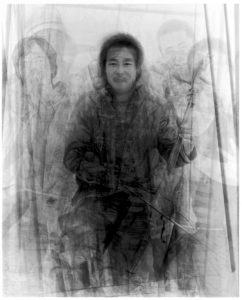
2010年9月14日
中国・内モンゴル 呼和浩特郊外の草原
ゼラチン・シルバー・プリント
21 Mongolian men
September 14, 2010
grasslands of Hohhot Region, Inner Mongolia, China
Gelatin silver print

2010年9月14日
中国・内モンゴル 呼和浩特郊外
ゼラチン・シルバー・プリント
21 Mongolian women
September 14, 2010
Hohhot Region, Inner Mongolia, China
Gelatin silver print

2009年5月2日
中国 北京市 天安門広場
ゼラチン・シルバー・プリント
30 men photographing themselves in front of the portrait of Chairman Mao
May 2, 2009
Tian’anmen Square, Beijing, China
Gelatin silver print

2009年5月2日
中国 北京市 天安門広場
ゼラチン・シルバー・プリント
35 women photographing themselves in front of the portrait of Chairman Mao
May 2, 2009
Tian’anmen Square, Beijing, China
Gelatin silver print

2009年11月26日
タイ メーホンソーン
ゼラチン・シルバー・プリント
22 Kayan women with brass neck rings
November 26, 2009
Mae Hong Son, Thailand
Gelatin silver print

2009年4月20日
台湾 三地門 原住民文化園区
ゼラチン・シルバー・プリント
29 indigenous people of Taiwan folk dancing
April 20, 2009
Indigenous Peoples Culture Park, Sandimen, Taiwan
Gelatin silver print

2009年9月27日、28日
インドネシア パプア州 ワメナの集落や市場
ゼラチン・シルバー・プリント
14 Dani women
September 27 and 28, 2009
settlements and marketplaces of Wamena, Papua, Indonesia
Gelatin silver print

2009年9月27日、28日
インドネシア パプア州 ワメナの集落や市場
ゼラチン・シルバー・プリント
21 men with Koteka (penis case)
September 27 and 28, 2009
settlements and marketplaces of Wamena, Papua, Indonesia
Gelatin silver print

2008年7月21日
インド ブッダガヤ スジャータ村 ニランジャナ川にかかる橋の上
ゼラチン・シルバー・プリント
30 men crossing a bridge to visit neighboring villages
July 21, 2008
bridge passing over the Niranjana River, Sujata, Bodh Gaya, India
Gelatin silver print

2008年7月21日
インド ブッダガヤ スジャータ村 ニランジャナ川にかかる橋の上
ゼラチン・シルバー・プリント
30 women crossing a bridge to visit neighboring villages
July 21, 2008
bridge passing over the Niranjana River, Sujata, Bodh Gaya, India
Gelatin silver print

2009年9月29日
インドネシア バリ島 ウブド村
ゼラチン・シルバー・プリント
22 women celebrating a wedding
September 29, 2009
Ubud, Bali, Indonesia
Gelatin silver print

2009年9月29日
インドネシア バリ島 ウブド村
ゼラチン・シルバー・プリント
22 men celebrating a wedding
September 29, 2009
Ubud, Bali, Indonesia
Gelatin silver print

タイ バンコクの公園
ゼラチン・シルバー・プリント
18 Harley Davidson riders
November 27, 2009
public park in Bangkok, Thailand
Gelatin silver print

2009年5月2日
中国 北京市の路上
ゼラチン・シルバー・プリント
28 taxi drivers
May 2, 2009
streets of Beijing, China
Gelatin silver print

2008年7月18日
インド バラナシの路上
ゼラチン・シルバー・プリント
43 rickshaw drivers
July 18, 2008
streets of Varanasi, India
Gelatin silver print

2000年-2003年
神奈川県 横浜市
ゼラチン・シルバー・プリント
24 people coming to the Wednesday Salon for children called SHERLOCK HOLMES
2000–2003
Yokohama, Kanagawa, Japan
Gelatin silver print

2002年6月12日
大阪府 長居スタジアムで
ゼラチン・シルバー・プリント
40 supporters of the 2002 England national team for the FIFA World Cup
June 12, 2002
Nagai Stadium, Osaka, Japan
Gelatin silver print

2002年6月14日
大阪府 長居スタジアムで
ゼラチン・シルバー・プリント
50 supporters of the 2002 Japan national team for the FIFA World Cup
June 14, 2002
Nagai Stadium, Osaka, Japan
Gelatin silver print

2002年10月15日
兵庫県 神戸市 神戸製鋼灘浜グランド
ゼラチン・シルバー・プリント
43 rugby players of Kobe Steel STEELERS
October 15, 2002
Kobe Steel Nadahama Field, Kobe, Hyogo, Japan
Gelatin silver print

2004年5月5日
千葉県 舞浜 東京ベイNK ホール
ゼラチン・シルバー・プリント
45 audiences at the live performance of rock band PIERROT
May 5, 2004
Tokyo Bay NK Hall, Maihama, Chiba, Japan
Gelatin silver print

2003年9月20日、21日
神奈川県 横浜市 かながわドームシアター
ゼラチン・シルバー・プリント
35 Butoh dancers, Noh and Kyogen performers, singers, and Itakos from the Torifune Butoh Company production BAKKE
September 20 and 21, 2003
Kanagawa Dome Theater, Yokohama, Kanagawa, Japan
Gelatin silver print

2003年4月4日、5日
京都府 京都市 宮川町 歌舞練場
ゼラチン・シルバー・プリント
30 Geiko and Maiko performers for the Kyo-Odori of Miyagawa-cho
April 4 and 5, 2003
Performance Studio in Miyagawa-cho, Kyoto, Japan
Gelatin silver print

2009年9月29日、30日
インドネシア バリ島 ウブド村
ゼラチン・シルバー・プリント
17 performers of traditional Balinese dance
September 29 and 30, 2009
Ubud, Bali, Indonesia
Gelatin silver print

2003年1月25日
東京都 日本橋 三越劇場
ゼラチン・シルバー・プリント
38 Kouta singers
January 25, 2003
Mitsukoshi Theater, Nihonbashi, Tokyo
Gelatin silver print

2009年11月27日
タイ バンコク チャオプラヤー川
ゼラチン・シルバー・プリント
33 boat racers
November 27, 2009
Chao Phraya River, Bangkok, Thailand
Gelatin silver print

2004年4月13日
福岡県 福岡ドーム
ゼラチン・シルバー・プリント
35 supporters of the Fukuoka Daiei Hawks
April 13, 2004
Fukuoka Dome, Fukuoka, Japan
Gelatin silver print

1999年-2003年
東京都 多摩地区の公園
ゼラチン・シルバー・プリント
30 mothers visiting the park with their children
1999–2003
a park of Tama Region, Tokyo
Gelatin silver print

2001年9月
介護老人保険施設 千葉県「たいよう」/東京都「白寿園」
ゼラチン・シルバー・プリント
55 elderly residents of special care nursing homes
September, 2001
Nursing Facility: “Taiyo”, Chiba/ “Hakuju-en”, Tokyo
Gelatin silver print

2001年 撮影日不明
千葉県 鴨川市 日産「エクストレイルカップ」
ゼラチン・シルバー・プリント
45 professional surfers at a competition
Date unknown, 2001
Nissan “X-Trail Cup”, Kamogawa, Chiba, Japan
Gelatin silver print

2010年11月23日
ウズベキスタン サマルカンドの結婚式場
ゼラチン・シルバー・プリント
28 men at a wedding ceremony
November 23, 2010
Wedding Hall, Samarkand, Uzbekistan
Gelatin silver print

2010年11月23日
ウズベキスタン サマルカンドの結婚式場
ゼラチン・シルバー・プリント
18 women at a wedding ceremony
November 23, 2010
Wedding Hall, Samarkand, Uzbekistan
Gelatin silver print

2002年5月18日
岐阜県 恵那市 根の上高原フェスティバル
ゼラチン・シルバー・プリント
60 people gathered at the trance music party
May 18, 2002
Nenoue Highlands Festival, Ena, Gifu, Japan
Gelatin silver print

2009年9月23日
インドネシア マルク州 アンボン市 TULEHU発 SAPARUA行き客船の船室
ゼラチン・シルバー・プリント
26 second-class cabin passengers
September 23, 2009
Ship from Tulehu to Saparua, Ambon, Maluku, Indonesia
Gelatin silver print

2009年9月19日
インドネシア マルク州 アンボン市
ゼラチン・シルバー・プリント
25 shoppers visiting the shopping center with their motorcycles
September 19, 2009
Ambon, Maluku, Indonesia
Gelatin silver print

2009年5月6日
韓国 ソウル市 弘益大学
ゼラチン・シルバー・プリント
21 graduate students and professors of the photography study of Hungik University
May 6, 2009
Hungik University, Seoul, Korea
Gelatin silver print

2008年5月26日
神奈川県 相模原市 県立相武台高校の図書室
ゼラチン・シルバー・プリント
31 students from Grade 2, Homeroom 1 of Sobudai High School
May 26, 2008
Sobudai High School Library, Sagamihara, Kanagawa, Japan
Gelatin silver print

2002年9月12日
滋賀県 彦根市 近江高等学校グランド
ゼラチン・シルバー・プリント
42 members of the baseball team at Ohmi High School
September 12, 2002
outdoor field of Ohmi High School, Hikone, Shiga, Japan
Gelatin silver print
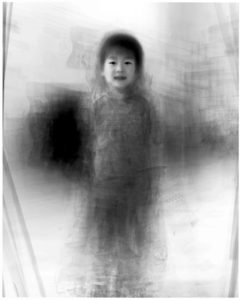
2004年6月4日
北海道 東川町幼児センターのホール
ゼラチン・シルバー・プリント
63 children at Higashikawa children’s center The House of Momonga
June 4, 2004
Higashikawa Children’s Center Hall, Hokkaido, Japan
Gelatin silver print

2003年10月8日
長崎県 対馬市 厳原町 大調小学校の校庭
ゼラチン・シルバー・プリント
26 students from Ohtsuki Primary School in Tsushima City
October 8, 2003
Ohtsuki Primay School campus grounds, Izuhara, Tsushima, Nagasaki, Japan
Gelatin silver print

2010年9月7日
中国 新疆ウイグル自治区 カシュガル旧市街
ゼラチン・シルバー・プリント
34 children in the old city quarters of Kashgar
September 7, 2010
Kashgar, Xinjiang Uyghur Autonomous Region, China
Gelatin silver print

2009年9月24日
インドネシア マルク州 アンボン市の運動場
ゼラチン・シルバー・プリント
23 members of the basketball team at Amahusu High School
September 24, 2009
Ambon City Athletic Field, Maluku, Indonesia
Gelatin silver print

2009年11月26日
タイ メーホンソーン
ゼラチン・シルバー・プリント
18 primary school students
November 26, 2009
Mae Hong Son, Thailand
Gelatin silver print

2009年4月19日
台湾 台北市 鄧公國民小学校の校庭
ゼラチン・シルバー・プリント
24 students from Grade 6, Homeroom 8, saluting the national flag at Dung Kong Elementary School
April 19, 2009
Dung Kong Elementary School campus grounds, Taipei, Taiwan
Gelatin silver print
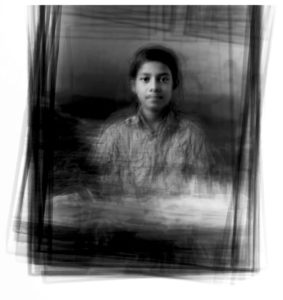
2008年7月28日
バングラデシュ ジェッソール州 ナイラ村 小学校の教室
ゼラチン・シルバー・プリント
20 fifth graders from a primary school
July 28, 2008
classroom, Nayra, Jessor, Bangladesh
Gelatin silver print

2010年11月22日
ウズベキスタン サマルカンド ミタン市 ハーナカ村 小学校の教室
ゼラチン・シルバー・プリント
34 eighth graders from the Samarkand Region 42 – Umeem Talim Primary School
November 22, 2010
classroom, Xanaka, Mitan, Samarkand, Uzbekistan
Gelatin silver print

2008年7月28日
バングラデシュ ジェッソール州 ナイラ村 中学校の教室
ゼラチン・シルバー・プリント
32 eighth graders from a junior high school
July 28, 2008
classroom, Nayra, Jessor, Bangladesh
Gelatin silver print

2008年7月13日
インド タミル・ナードゥ州 カニャークマリ
ゼラチン・シルバー・プリント
34 children of a fishing village playing in the ocean water
July 13, 2008
Kanyakumari, Tamil Nadu, India
Gelatin silver print
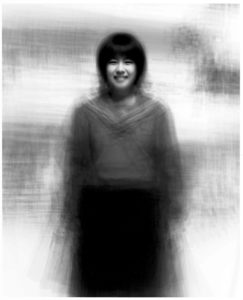
2003年10月9日
長崎県 多良見町 琴海中学校の校庭
ゼラチン・シルバー・プリント
60 female students from Tarami Kinkai Junior High School
October 9, 2003
Kinkai Junior High School campus grounds, Tarami, Nagasaki, Japan
Gelatin silver print

2010年2月6日
インドネシア 国立バンダ・アチェ第2 小学校の廊下
ゼラチン・シルバー・プリント
34 students from the 2nd Banda Aceh National Primary School
February 6, 2010
Kompleks Sekolah Dasar Negri 2 Primary School corridors, Banda Aceh, Indonesia
Gelatin silver print

2010年10月4日
インドネシア、バンダアチェ
ゼラチン・シルバー・プリント
29 children practicing their pilgrimage to Mecca
October 4, 2010
public park in Banda Aceh, Indonesia
Gelatin silver print

2010年11月22日
ウズベキスタン サマルカンド ミタン市 ハーナカ村 小学校の教室
ゼラチン・シルバー・プリント
18 second graders from the Samarkand Region 42 – Umeem Talim Primary School
November 22, 2010
classroom, Xanaka, Mitan, Samarkand, Uzbekistan
Gelatin silver print

2014年10月12-14日
占拠エリア(金鐘、銅鑼湾、旺角) 香港
ゼラチン・シルバー・プリント
25 participants at 2014 Hong Kong protests “Umbrella Revolution”
October 12–14, 2014
occupied area (Admiralty, Causeway Bay, Mong kok), Hong Kong
Gelatin silver print

2014年10月12-14日
占拠エリア(金鐘、銅鑼湾、旺角) 香港
ゼラチン・シルバー・プリント
26 policemen at 2014 Hong Kong protests “Umbrella Revolution”
October 12–14, 2014
occupied area (Admiralty, Causeway Bay, Mong kok), Hong Kong
Gelatin silver print

2015年8月30日
国会前
ゼラチン・シルバー・プリント
26 people raising their voice against the security-related bill in front of the Diet
August 30, 2015
In front of the Diet, Tokyo
Gelatin silver print
Regular size:Sheet 35.5×27.9cm
Large size:Sheet approx. 177×142cm
Since childhood, I’ve always wondered about people, myself and everyone else in this world―whether our existence is really felt in the world, whether our world really exists―and my photography is an on-going extension of that sense of wonder.
In 1995, Japan suffered two major calamities, the Kobe Earthquake¹ and the Tokyo subway sarin attack.² At the time, I was struck by my own paucity of imagination and how little I could imagine the pain and violence that had befallen people who were physically so close to me. How could I imagine the world of others “as if it were me right there?”
Amidst daily feelings of emptiness, I set before myself a tough task. I would go around actually meeting others, take their portraits and layer them at very low exposures onto one sheet of printing paper to create a single image, a built-up group-in-one meta-portrait. Since 2000, many artists rely on computers to digitally merge and morph layered images, but I prefer to use dozens of repeated micro-exposures to integrate the presence of a multitude into one. Such printing in the darkroom is exacting, like hand-crafted artistry of a bygone era; it allows no mistakes. Each individual image must be projected perfectly level, only then will they all match up on a pictorial horizon line, none larger or smaller, better or worse.
Since 1999, this project has taken me all over Asia. Eventually I plan to continue on to the Americas, Europe and Africa. Perhaps one day it will form a collective body of work that will let us visualize the interrelatedness of everyone here together on this planet.
With the advent of the 21st century, photography seems to have outlived any set function. Will it cease to have any value at all? I myself have become interested in photography’s inherent potential to let viewers experience other worlds with personal immediacy (however far removed from their own reality). For instance, when looking at vintage photographs or snapshots of unknown children, we can immediately picture ourselves right there in the scene. If photography can contribute even a little towards us humans having more of this sympathetic sense of “being there”―what I call “spontaneous empathy” toward others and the world at large―that’s reason enough for photography to exist and to give hope that we can coexist.
Ken Kitano 2010
1. At 5:46am on 17 January 1995, magnitude JMA 7.3 seismic shocks at two different epicenters along the Awaji Island Fault rocked the Kansai area. This earthquake, also called the Great Hanshin (Osaka-Kobe) Earthquake, wreaked the worst damage in Japan since the Great Kanto (Tokyo-Yokohama) Earthquake of 1923.
2. On 20 March 1995, terrorist members of a cult movement named Aum Shinrikyo planted packets of sarin poison gas at multiple locations in the Tokyo Metro, leaving 12 dead and upwards of 6000 seriously affected.
The Making of our face at Three Shadows Photography Art Centre, Beijing
by Ken Kitano in 2015



